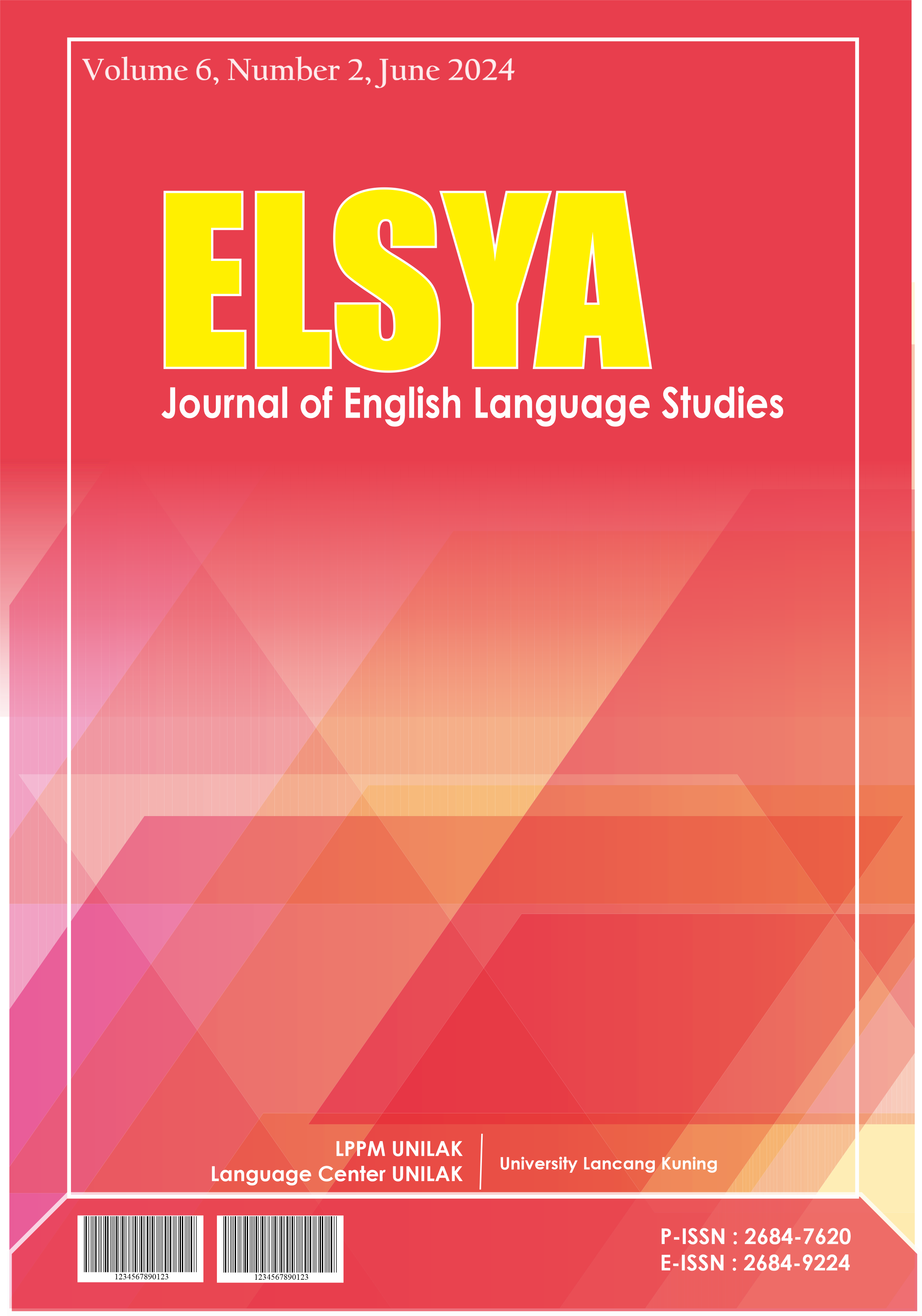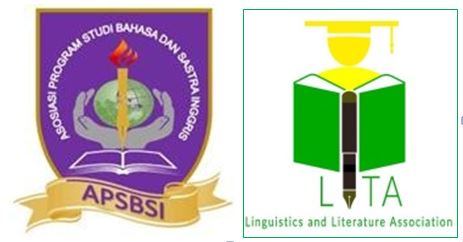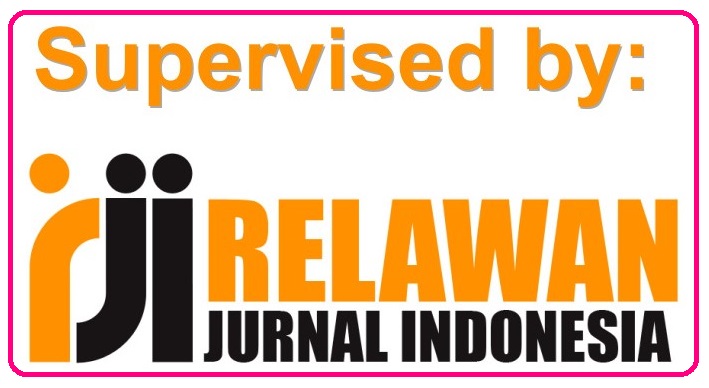Unveiling the Landscape of ClassDojo in Education: A Systematic Review
Abstract
In the backdrop of the evolving game-based educational platforms from online resources, language researchers have directed their attention toward the utilisation of ClassDojo due to its multifunctionality, which includes many features such as attendance tracking, messaging, portfolio management, games, and more. This qualitative systematic review examined the existing research on using ClassDojo in the classroom. The purposes were to provide evidence of ClassDojo for teachers, students, or parents and to identify the study characteristics, such as the publication trends, participant profiles, or the methodological approaches from the published research about ClassDojo. The initial database search used Publish and Perish (PoP) version 8 and identified as many as 174 published research. However, twenty-three journal articles were selected after conducting the screening process by applying inclusion and exclusion criteria. Results from the analysis of 23 articles found that articles released in 2021 (n = 6) were the most frequently used in this systematic review study. Then, for the education level of participants, the elementary education settings received the most attention (n = 6). Additionally, experimental design (n = 7) was the methodology most frequently employed by the study under investigation. Furthermore, the reviewed studies also show that ClassDojo is mainly used as a teaching and learning media (n = 8). Thus, the productive use of ClassDojo was recommended because it can effectively manage student behavior, promote positive classroom management, and enhance parent engagement. Therefore, ClassDojo can potentially enhance online interaction in the class and provide a community to share classroom activities privately or publicly among teachers, students, and parents.
Downloads
References
Alias, N. A., & Zainuddin, A. M. (2005). Innovation for Better Teaching and Learning: Adopting the Learning Management System. Malaysian Online Journal of Instructional Technology, 2(2), 27–40. https://citeseerx.ist.psu.edu/document?repid=rep1&type=pdf&doi=d5f63457fb7c53eb83bd2149d860753c3ebca662
Anugerah, R., Yuliana, Y. G. S., & Riyanti, D. (2019). The Potential of English Learning Videos in Form of Vlog on Youtube for ELT Material Writers. Proceedings International Conference on Teaching and Education (ICoTE), 2(2), 224. https://doi.org/10.26418/icote.v2i2.38232
Bahçeci, F. (2019). ClassDojo: The Effects of Digital Classroom Management Program on Students-Parents and Teachers. International Online Journal of Educational Sciences, 11(4), 160–180. https://doi.org/10.15345/iojes.2019.04.012
Benhadj, Y., Messaoudi, M. E., & Nfissi, A. (2019). Artificial Intelligence in Education: Integrating Serious Gaming into the Language Class ClassDojo Technology for Classroom Behavioral Management. IAES International Journal of Artificial Intelligence (IJ-AI), 8(4), 382–390. https://doi.org/10.11591/ijai.v8.i4.pp382-390
Bielska, J. (2011). The Experimental Method in Action Research. The Experimental Method in Action Research. In D. Gabryś-Barker (Ed.). Action Research in Teacher Development: An Overview of Research Methodology , 85–119. https://opus.us.edu.pl/info/article/USLbb37a16c07c643f29d09cfe9a9fc6741/
Bradley, V. M. (2020). Learning Management System (LMS) Use with Online Instruction. International Journal of Technology in Education, 4(1), 68–92. https://doi.org/10.46328/ijte.36
Britain, S., & Liber, O. (2004). A Framework for Pedagogical Evaluation of Virtual Learning Environments. Educational Cybernetics: Reports. Paper 2. https://hal.science/file/index/docid/696234/filename/Liber-2004.pdf
Bunau, E. (2020). Studio Quiz Used as A Test to Comprehend Listening Skill: Perception of English Education Study Program Student of Tanjungpura University. JETL (Journal of Education, Teaching and Learning), 5(1), 28. https://doi.org/10.26737/jetl.v5i1.1031
Burger, M. S. (2015). The Perception of the Effectiveness of ClassDojo in Middle School Classrooms: A Transcendental Phenomenological Study (Doctoral dissertation, Liberty University). https://core.ac.uk/download/pdf/58826492.pdf
Christopoulos, A., Sprangers, P., & Wang, S. (2021). Integration of Educational Technology during the Covid-19 Pandemic: An Analysis of Teacher and Student Receptions. Cogent Education, 8(1), https://doi.org/10.1080/2331186X.2021.1964690
Coates, H., James, R., & Baldwin, G. (2005). A Critical Examination of the Effects of Learning Management Systems on University Teaching and Learning. Tertiary Education and Management, 11(1), 19–36. https://doi.org/10.1007/s11233-004-3567-9
David, S. A. (2013). A Critical Understanding of Learning Management System. A Quarterly Refereed Journal of Dialogues on Education, 2(4), 4–12. https://www.academia.edu/download/31179027/A_Critical_Understanding_of_Learning_management_system.pdf
DeCoito, I., & Estaiteyeh, M. (2022). Transitioning to Online Teaching during the Covid-19 Pandemic: An Exploration of Stem Teachers’ Views, Successes, and Challenges. Journal of Science Education and Technology, 31(3), 340–356. https://doi.org/10.1007/s10956-022-09958-z
DiGiacomo, D. K., Greenhalgh, S., & Barriage, S. (2022). How Students and Principals Understand ClassDojo: Emerging Insights. TechTrends, 66(2), 172–184. https://doi.org/10.1007/s11528-021-00640-6
Dornyei, Z. (2007). Research Methods in Applied Linguistics. Oxford university press.
Garlen, Julie. C. (2019, February 26). ClassDojo Raises Concerns about Children’s Rights. https://theconversation.com/classdojo-raises-concerns-about-childrens-rights-111033
González, F. I., Urrútia, G., & Alonso-Coello, P. (2011). Systematic Reviews and Meta-Analysis: Scientific Rationale and Interpretation. Revista Española de Cardiología (English Edition), 64(8), 688–696. https://doi.org/10.1016/j.rec.2011.03.027
Harris, J. D., Quatman, C. E., Manring, M. M., Siston, R. A., & Flanigan, D. C. (2014). How to Write A Systematic Review. The American Journal of Sports Medicine, 42(11), 2761–2768. https://doi.org/10.1177/0363546513497567
Kaplan, G., Bolat, Y. I., Göksu, I., & Özdaş, F. (2021). Improving the Positive Behavior of Primary School Students with the Gamification Tool “ClassDojo”. İlköğretim Online, 20(1), 1193–1204. https://doi.org/10.17051/ilkonline.2021.01.108
Khan, K. S., Kunz, R., Kleijnen, J., & Antes, G. (2003). Five Steps to Conducting A Systematic Review. Journal of the royal society of medicine, 96(3), 118-121. https://doi.org/10.1177/014107680309600304
Kitchenham, B., Pretorius, R., Budgen, D., Pearl Brereton, O., Turner, M., Niazi, M., & Linkman, S. (2010). Systematic Literature Reviews in Software Engineering – A Tertiary Study. Information and Software Technology, 52(8), 792–805. https://doi.org/10.1016/j.infsof.2010.03.006
Liberati, A., Altman, D. G., Tetzlaff, J., Mulrow, C., Gøtzsche, P. C., Ioannidis, J. P., ... & Moher, D. (2009). The PRISMA Statement for Reporting Systematic Reviews and Meta-Analyses of Studies that Evaluate Health Care Interventions: Explanation and Elaboration. Annals of internal medicine, 151(4), W-65. https://doi.org/10.1136/bmj.b2700
MacLean-Blevins, A. O. (2013). ClassDojo: Supporting the Art of Student Self-Regulation. Rising Tide, 6, 1–20. https://scholar.googleusercontent.com/scholar?q=cache:JoJ39OrMLv0J:scholar.google.com/&hl=id&as_sdt=0,5
Mashuri, S., Rosmayanti, & Jaiz, D. A. (2022). Implementation of the ClassDojo Platform as E-Learning Media at the Khalifah Islamic Elementary School Palu. Paedagogia: Jurnal Pendidikan, 11(2), 197–210. https://doi.org/10.24239/pdg.Vol11.Iss2.325
Mims, L. (2013, June 13). Classroom Behavior? There’s an App for that. Edutopia https://www.edutopia.org/blog/classroom-behavior-classdojo-app-lisa-mims
Minh, N. T. H., & Ngan, V. T. (2022). Using ClassDojo to Enhance Online Interaction in English Learning at Lower Secondary Schools. International Journal of Social Science and Human Research, 5(11), 5067–5074. https://doi.org/10.47191/ijsshr/v5-i11-34
Mora, A. B. (2020). Gamification for Classroom Management: An Implementation Using ClassDojo. Sustainability, 12(22), 1–15. https://doi.org/10.3390/su12229371
Mulyono, H. (2016). Using Quipper as an Online Platform for Teaching and Learning English as a Foreign Language. Teaching English with Technology, 16(1), 59–70. https://files.eric.ed.gov/fulltext/EJ1135931.pdf
Polanin, J. R., Maynard, B. R., & Dell, N. A. (2017). Overviews in Education Research: A systematic review and analysis. Review of Educational Research, 87(1), 172-203. https://doi.org/10.3102/0034654316631117
Pratista, G. Y. (2023). Students’ Perceptions of Using ClassDojo in a Teaching and Learning Process. English Education: Journal of English Teaching and Research, 8(1), 77–90. https://doi.org/10.29407/jetar.v8i1.19257
Prayudha, J. (2023). Students’ Problems in Implementing Technology Integrated in ELT classroom. Journal of English Education Program, 4(2). https://doi.org/10.26418/jeep.v4i2.64583
Qori, S. A. N., Hidayat, A., & Maspupah, M. (2017). Penerapan Media Pembelajaran dengan Menggunakan Aplikasi Edmodo Berbasis Blended Learning terhadap Hasil Belajar Siswa pada Materi Sistem Indera. Semantic Scholar (Doctoral dissertation, UIN Sunan Gunung Djati Bandung). https://digilib.uinsgd.ac.id/4111/
Reid Chassiakos, Y. (Linda), Radesky, J., Christakis, D., Moreno, M. A., Cross, C., Hill, D., Ameenuddin, N., Hutchinson, J., Levine, A., Boyd, R., Mendelson, R., & Swanson, W. S. (2016). Children and Adolescents and Digital Media. Paediatrics, 138(5), e20162593. https://doi.org/10.1542/peds.2016-2593
Rezeki, Y. S., Wardah, W., & Rosnija, E. (2020). Pelatihan Pembuatan Media Pembelajaran Berbasis Teknologi Bagi Guru-Guru SMP dan SMA di Desa Sandai, Kalimantan Barat. Tridarma, 3(1), 104–108. https://ejournal.iocscience.org/index.php/abdimas/article/view/664
Rhode, J., Richter, S., Gowen, P., Miller, T., & Wills, C. (2017). Understanding Faculty Use of the Learning Management System. Online Learning, 21(3). https://doi.org/10.24059/olj.v21i3.1217
Riyanti, D. (2019). The role of Motivation in Learning English as a Foreign Language. JELTIM (Journal of English Language Teaching Innovations and Materials), 1(2), 29. https://doi.org/10.26418/jeltim.v1i1.27788
Saeger, A. M. (2017). Using ClassDojo to Promote Positive Behaviors and Decrease Negative Behaviors in the Classroom (Master thesis, Rowan University). 2443. https://rdw.rowan.edu/etd/2443
Salam, U., Wahdini, W., Surmiyati, S., Rezeki, Y. S., Riyanti, D., & Suthathothon, P. (2023). Teachers’ Challenges and Strategies in Using Digital Media in Teaching English. Journal of English Language Teaching Innovations and Materials (Jeltim), 5(1), 49–68. https://doi.org/10.26418/jeltim.v5i1.63204
Santos, J. C. D., & Vélez Ruiz, M. C. (2021). Using ClassDojo to Motivate Kids Participation in the EFL Online Classes during the Covid-19 Pandemic: A Case Study. AtoZ: Novas Práticas Em Informação e Conhecimento, 10(2), 58–65. https://doi.org/10.5380/atoz.v10i2.78711
Solano, M. (2022). Communicating Effectively: An Exploration of Communication Methods Between Parents and Teachers with Mixed Methods (Doctoral dissertation, West Chester University). 156. https://digitalcommons.wcupa.edu/all_doctoral/156
Stemler, S. (2000). An Overview of Content Analysis. Practical Assessment, Research, and Evaluation, 7(1). https://doi.org/10.7275/Z6FM-2E34
Sulissusiawan, A., & Salam, U. (2017). Students’ Use of Online Resources to Enhance Learning Endeavors. International Journal of Virtual and Personal Learning Environments, 7(2), 44–53. https://doi.org/10.4018/IJVPLE.2017070104
Supriati, R., Bunau, E., & Salam, U. (2023). Developing West Kalimantan Folklore Videos for Narrative Text Material. Journal of English Education Program, 4(2). https://doi.org/10.26418/jeep.v4i2.62253
Tarigan, D. M. B., & Sauhenda, A. F. (2022). Penggunaan Aplikasi ClassDojo sebagai Upaya Peningkatan Pembelajaran Bagi Guru SMP YPK Merauke. Karunia: Jurnal Hasil Pengabdian Masyarakat Indonesia, 1(4), 51–59. https://doi.org/10.58192/karunia.v1i4.251
Tran, T., Ho, M.-T., Pham, T.-H., Nguyen, M.-H., Nguyen, K.-L. P., Vuong, T.-T., Nguyen, T.-H. T., Nguyen, T.-D., Nguyen, T.-L., Khuc, Q., La, V.-P., & Vuong, Q.-H. (2020). How Digital Natives Learn and Thrive in the Digital Age: Evidence from an Emerging Economy. Sustainability, 12(9), 3819. https://doi.org/10.3390/su12093819
Universitas Medan Area. (2021, July 22). Apa itu Learning Management System (LMS). Yayasan Pendidikan Haji Agus Salim, Universitas Medan Area. https://uma.ac.id/berita/apa-itu-learning-management-system-40lms41
University of Kansas. (2021, January 9). How Teaching with Technology has Transformed Education. The University of Kansas School of Education and Sciences. https://educationonline.ku.edu/community/how-teaching-with-technology-has-transformed-education
Watson, A. (2014, January 27). Using ClassDojo to Reinforce Positive Behavior. Truth For Teachers. https://truthforteachers.com/using-class-dojo-reinforce-positive-behavior/
Williamson, B. (2017). ClassDojo Poses Data Protection Concerns for Parents. LSE Library Service. https://core.ac.uk/download/pdf/82955378.pdf
Yuen, C. L. (2021). Exploring Teachers’ Experiences of Using ClassDojo: A Postphenomenological Study (Doctoral dissertation, University of Alberta). https://doi.org/10.7939/r3-swxn-4822
- Author retains the copyright and grants Elsya Journal the right of first publication of the work simultaneously licensed under the Creative Commons Attribution-ShareAlike 4.0 License that allows others to share the work with an acknowledgment of the work's authorship and initial publication in this journal
- The author is able to enter into separate, additional contractual arrangements for the non-exclusive distribution of the journal's published version of the work (e.g., post it to an institutional repository or publish it in a book) with the acknowledgment of its initial publication in this journal.
- The author is permitted and encouraged to post his/her work online (e.g., in institutional repositories or on their website) prior to and during the submission process, as it can lead to productive exchanges, as well as earlier and greater citation of the published work (See The Effect of Open Access).








 Elsya Journal is licensed under
Elsya Journal is licensed under 